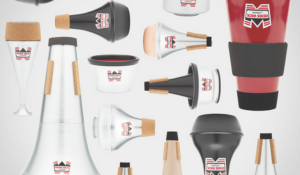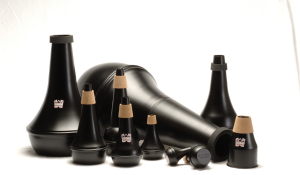Brass Instrument Teaching Tips for Foodies


Hi, my name is Kate Amrine and I am a professional trumpet player and educator. I also love to cook and eat new foods. One of my favorite aspects of traveling to a new place is exploring the food scene. I discovered a cooking series on Youtube where a food scientist has three chefs of different levels (amateur, home cook, and expert) make the same dish yet in their own ways given their skillset and then it is evaluated afterwards. While all grilled cheeses have melted cheese and bread, one chef may use homemade sourdough or American cheese or have a fancier way of toasting the bread etc. Each chef in the show approaches the dish with their own skill level and makes the required food using all of their own talents and experiences. The food scientist then evaluates all of them as to how they fulfilled the task and whether their dish met the appropriate characteristics. As music educators we are constantly evaluating our students under dozens of criteria including pitch accuracy, rhythm, sound production etc. I currently teach students across all ages and levels and have found that regardless of background or experience on the instrument, these three levels of practicing (just as there were three levels of Chef) are applicable for everyone.

Level 1: The Basics
Level 1 to me is what most musicians start with on a new piece of music, regardless of their years of experience or capabilities on the instrument.
Step 1: Establish accuracy and understanding of its basic components
- the notes
- rhythms
**Establishing notes and rhythms happens on 2 levels: the physical level: Have you ever heard the phrase “I just have to get it under my fingers” ? And the mental level: Ex. This piece is in F# and I need to remember my E is always sharp in this key.
Without musical training, you can still be at this level on a piece of music. We all know how to sing happy birthday - at one point we were taught how the tune goes (i.e. Its notes and rhythms).
Surpassing Level 1 results in an accurate performance but is missing the extra musical elements to make it truly inspiring. If your student has a good handle on the notes and rhythmic aspects of the piece and is ready to increase their musical understanding, then let’s proceed to level 2.

Level 2: Extra-musical
Level 2 is what we see most students bringing to their private lessons, similarly regardless of ability. Maybe this is a fleshed-out etude that has been in the practice room a handful of times or a solo where some musical decisions are starting to be made but could be more convincing. This level is about making musical choices to increase the music making beyond just the notes and rhythms.
Step 2: Focus on adding musical ingredients
- dynamics
- changes to tempo
- articulation
Some of these can be things that are actually written in the music but can also be things that are added in each musician’s interpretation. Level 1 musicians perform in a way that mimics recordings or playback, as opposed to creating their own interpretation. In Level 2 We want to sound as accurate as we can when playing but if you aren’t truly saying something musically then why would someone want to listen to you perform? Since we are fortunately humans, not robots or a song created by AI, we have the power and the responsibility to go beyond what is on the page. If you are feeling confident with your musical choices, then you are ready to move on to Level 3.
Get our newest tips, updates, videos, clinics, community events, and more by joining Denis Wick Tips Blog

Level 3: The Performer
Level 3 is that feeling of a truly free performance where you aren't worried about missed notes or how a certain section will go. It is not about playing a piece perfectly or with as much musicality as possible but rather when you are in a flow state and churning out musical opinions and contributions without asking questions with your interpretation. One person asks questions with their playing; maybe they are nervous or weren’t sure if a certain section was 100% how they wanted to interpret it. The other performer is truly performing the piece and making a strong statement. They are saying this is how it goes; this is my interpretation and I am sharing that with you right now. The difference between the two performers isn’t necessarily accuracy but whether the student is musically asking questions, or giving answers.
One common issue I often face with my students is identifying the difference between Level 2 and Level 3. This is the trickiest because this is the level most students are at when bringing pieces into lessons. I have found that many students may be stuck in Level 2 for a while and unable to push through to be as musical as they can to be in Level 3. Some specific actions that differentiate a Level 3 player from a Level 2 are:
- Establishing breath marks. If you are truly as familiar as you possibly can be with a piece you are working on, you will have breath marks written in or at least know the spots you are trying to be mindful of.
- Dynamic Choices: Deciding with intention where you follow or adjust dynamics, phrasing, and articulation.
- Tempo: is it robotic or were specific choices made based on musicality
Lastly, a Level 3 performance of a piece doesn’t mean that this is the only correct version of this piece. As we know, there are a million recordings of insert brass concerto name here and many of them are definitely great and different Level 3 interpretations.

Find all our Denis Wick resources in one spot on the Denis Wick app. Download to view videos, clinics, educator resources, podcasts, product information & more!




